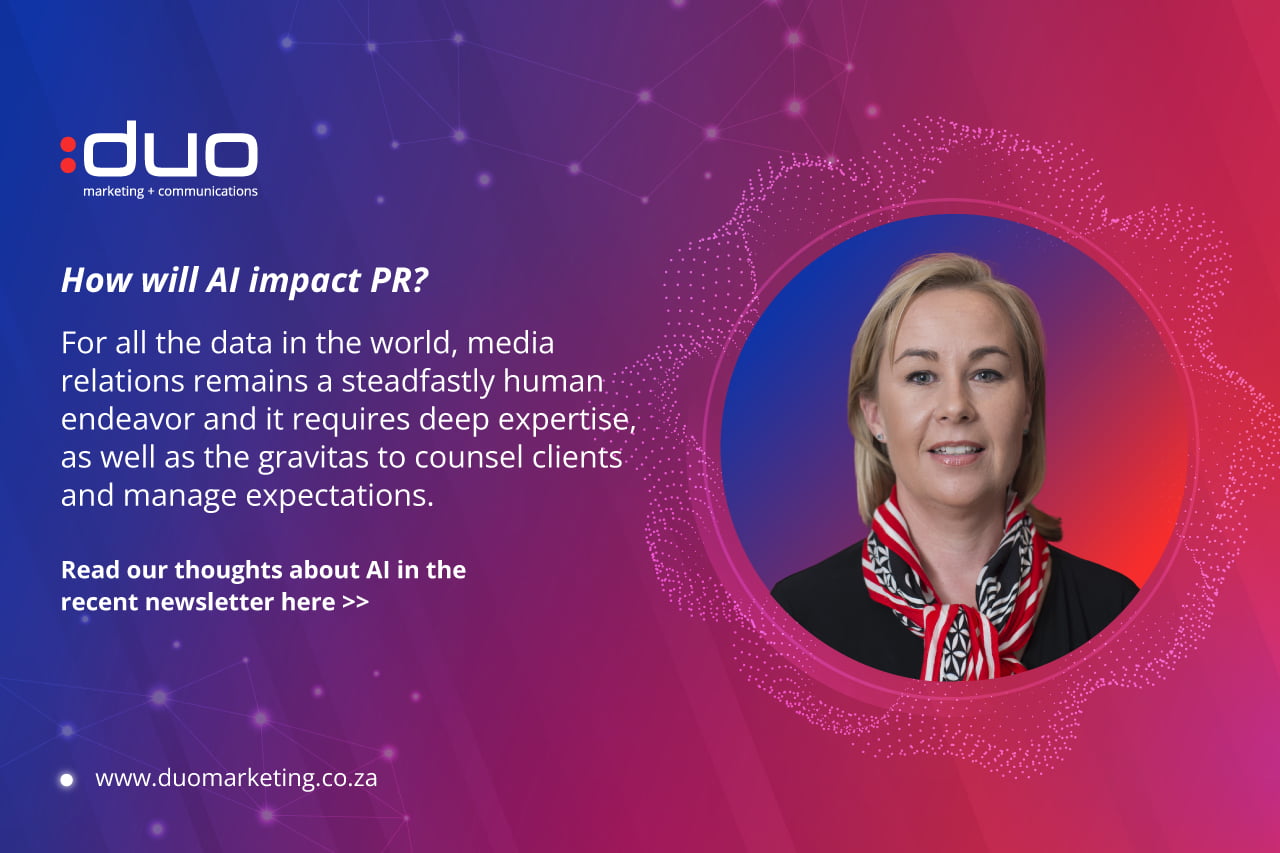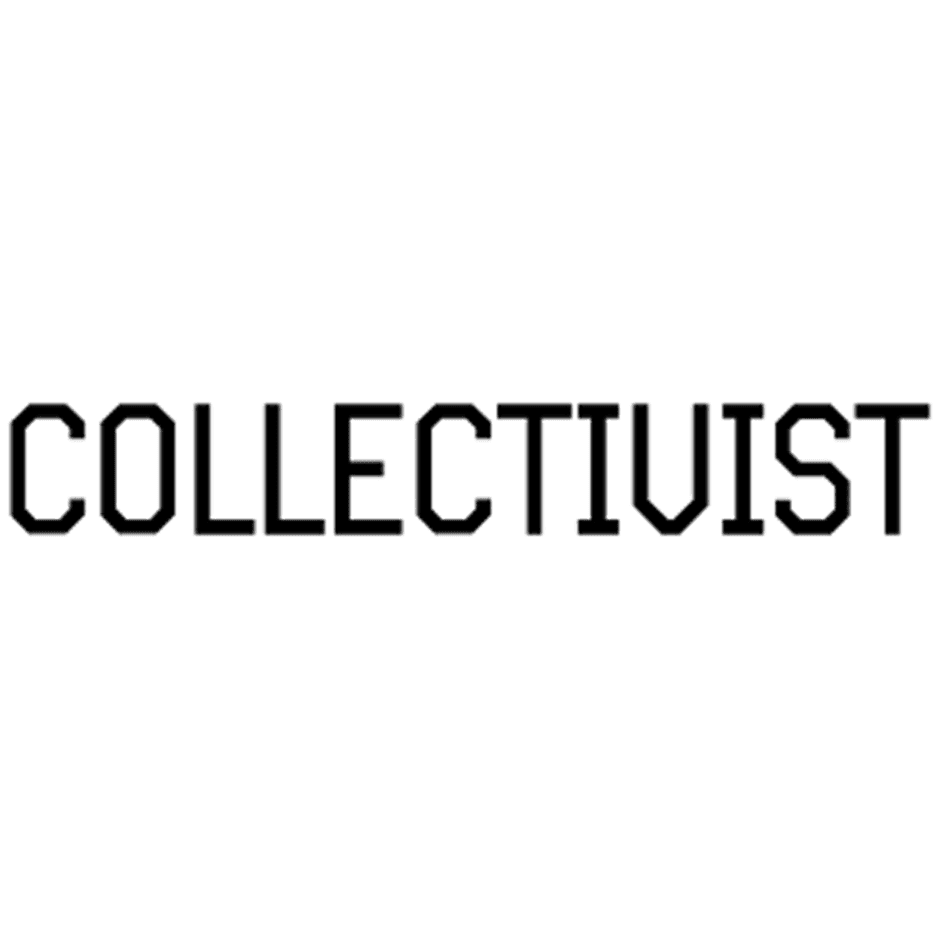At DUO, we believe in building strategic data-led campaigns for our clients that are measurable and trackable. Whether this is in the realm of digital marketing – and most of you have started your digital-led journeys with us – or various elements of content marketing multimedia across platforms, the ability to drive measurable business results is what gets us out of bed every morning.
We are excited by the possibilities that AI brings to our space. Whether it’s tools to summarise entire web pages, tone and editing suggestions, creative thought starters, building user guides, and much more, the possibilities for communications enhancement far outweigh many perceived risks (for now). Let’s go back for a few moments before we move forward. When asked to provide a short definition of public relations, OpenAI’s ChatGPT generated this response:
“Public relations (PR) is a strategic communication discipline that aims to build and maintain a positive image and relationship between an organisation and its various stakeholders, including the public, media, customers, employees, and investors. The primary goal of public relations is to create understanding, trust and goodwill for the organisation, fostering a positive perception of its values, products, and activities. PR professionals employ a range of communication tactics, such as media relations, social media engagement, events, and crisis management, to shape public perception, manage reputation, and ensure transparent and effective communication. Through these efforts, public relations plays a crucial role in influencing public opinion and facilitating mutually beneficial connections between organisations and their audiences.”
Now that we know what generative AI has to say, considering the data sets and biases used to train ChatGPT, let’s take a closer look with a DUO lens. AI is poised to add exciting new opportunities for businesses. Everything ChatGPT said is true, but just like technology evolves, the tactics of PR have evolved too. What may have been standard practice before requires specialised intervention today.
PR builds the real estate from which a brand leverages its marketing and sales efforts. Those who used to watch the UK version of Dragon’s Den will remember the recurring question when the Dragons were showing interest in a business pitch: “What are your plans for PR?” PR’s efforts centre around share of voice in media of impact, on platforms with weight. Share of voice is crucial for brand awareness and credibility.
PR specifically, and brand communication broadly, makes use of various types of media: earned, owned, shared and paid. You’d have picked this up in various engagements with us. If we refer to the job of building brand credibility in PR, we refer almost exclusively to the earned media space, and more often than not, thought leadership content. Earned media is where the media publishes or broadcasts content about your brand that you have not specifically paid for. In other words, it is not marked as a “paid partnership”. In this realm, the single-most important stakeholder is the publication or channel because it is through their platforms that we reach the public and target audiences.
However, this media world is dramatically different from just 15 years ago. Retrenchments are cutting out the soul of a once-powerful media sector. The move towards digital, and a battle for survival in the face of trying to stay relevant and compete with social media, has seen newsrooms change their business models.
Whereas at the turn of the century media houses were full of desk editors, specialist journalists and teams of sub editors, today they are shells of their former glory. One person does the job of four or more people and those with a high level of skill are moving into other industries, such as PR.
While this has a material impact on the type of content we create, it also has a massive impact on the tactics we deploy to land earned media coverage. In a world where there are markedly fewer publications than before, and where individuals who are manning the doors to publications are more junior and stretched than ever before, PR coverage is not guaranteed and results are diminishing across the industry.
This is where our investment in media specialists has come to the fore. Our teams understand that bombarding journalist inboxes with content is counterproductive and it won’t even be read. Our teams understand that phoning a journalist in the lead up to their deadline is a recipe for disaster. Our teams know who is working which shift, what their evolving roles entail, how to build relationships and how to remain on the good side of increasingly stressed editors and reporters.
For all the data in the world, media relations remains a steadfastly human endeavour and it requires deep expertise, as well as the gravitas to counsel clients and manage expectations.
Headlines, subject lines on emails, well-timed phone calls with perfectly curated elevator pitches, these are qualitative skills that we hone in our teams. These can’t be taught on a two-day course. Indeed, they can’t be taught in a four-year degree. They come from many, many hours in the trenches, on both sides of the PR-media divide.
It is with in mind that we spend a great deal of time understanding your business, and working with you to curate strong content that is relevant to the zeitgeist in the country and the audiences of our targeted publications. And through all of this, one thing remains true. Content is king, and the content we produce is tailored for one purpose: To position your brand as a credible industry leader in the media of impact. Precise media relations is how we do it.
Precise in the context of 2024 for means fully integrated campaigns, where each leg strategically supports the other to land the right messages with the right audiences at the right time. Some of the more impactful digital marketing tools for this year will no doubt include video, SEO-optimised blogs, podcasts, sponsored content and webinars for lead generation. However, now that the shadow of Covid-19 has been replaced by the light of technology-powered optimism, we can focus – with confidence – on people again. Live events remain crucial in the right context because at its core, communication is always human to human. Finally, each integrated digital campaign is held together by the power of the content.
We can’t wait to make more shared magic this year!
Judith Middleton, CEO at DUO


